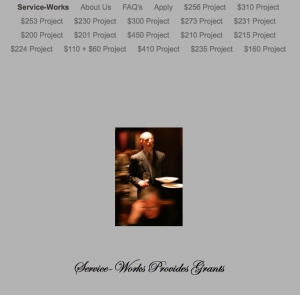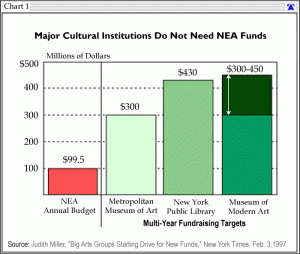
Sew for victory, 1941-3
Taking stock of the value of art is integrally tied to the value of artists. Artists’ work as educators, mentors and citizens of our communities is vital to a healthy and vibrant civic life. Currency in art has a beautiful double meaning – it’s about cultural relevance as well as economics. The fundamental question of how artists are valued in our society has been introduced in a more public dialogue in recent months by the press, and it’s long overdue. According to economic data, the arts and culture in the state of Texas in 2007 generated more revenue for the state than four Superbowls.
What is the value of art – for those who make it and how it gets made? Artadia, where I’m Executive Director, works to raise funds in specific cities and redistribute them to the awarded artists after a rigorous jury process conducted through both slide review and studio visits. A nonprofit arts services organization, Artadia was founded in 1998 in direct response to the elimination of the individual artist fellowships at the National Endowment for the Arts. Applications are open to all visual artists living and working in our specific partner cities (Atlanta, Boston, Chicago, Houston and the San Francisco Bay Area). In the past 12 months, we’ve seen our application numbers rise nearly 50% across the US.
All the headiness of the arguments of the value of artists and art in our society also makes me think of several very smart artists projects like San Francisco-based artist Josh Greene’s Service Works grants. For several years, Josh has been distributing the tips he earns from waiting tables at a high end Bay Area restaurant to artists who apply for grants with him.

"Serviceworks," Josh Greene
Here’s a graph from an April 1997 article that was titled, “Ten Good Reasons to Eliminate Funding for the National Endowment for the Arts“:

Major cultural institutions do not need NEA funds, 1997
Artadia brings focus into local communities to show the myriad ways artists are critical to civic life and creative culture. In raising the funds locally to reinvest in the individual artists working in those cities, we act nationally to leverage funding and exposure for the artists and communities. Art and artists help our American cities prosper, innovate and grow.
The New York Times has featured almost weekly updates on the business of the arts and the role of artists since the Obama administration took office. Just today, Robin Pogrebin’s coverage of the funds available for nonprofits through the American Recovery Act points out that there is too little funding available to “spare” the positions and artist contractors at risk at the nearly 3,000 nonprofits that applied for salary support on the April 2 deadline.
I watched with bated breath as first Congress included stimulus funds for the National Endowment for the Arts, then took them away, and then re-introduced $50 million back into the landmark package passed. The mere fact that funding for the National Endowment for the Arts in the recovery act was tied in with zoos, highway beautification, and aquariums speaks volumes.
That said, the arguments presented in the papers and by arts leaders show glimmers of hope to me – though we are a long way away from the restitution of the NEA’s fellowship program, or the budget to its funding levels of the early 90s heyday. Artists in our contemporary society as both cultural producers and members of the work force are just as important as folks who hold manufacturing jobs in Detroit.
In her February 15, 2009 article, “Saving Federal Arts Funds: Selling Culture as an Economic Force,” Robin Pogrebin quotes Reynold Levy, President of Lincoln Center, saying, “I hope the maximum amount of the $50 million finds its way into the pockets of artists and those who support them. An employed dancer is as important as an employed construction worker. His or her family has many needs, owns a home, buys a car and makes an impact on the economy.”
Artists both help us see the world in new ways, and add inestimable value to our society.




Pingback: Reader: April 16, 2009 « updownacross
Pingback: Interview: Fahamu Pecou | Art21 Blog